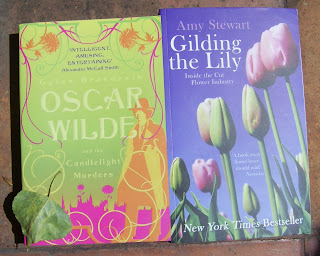
It would appear good horse literature is harder to find than good dog (and cat) literature.
Case in point – “Riding Lessons” by media darling Sara Gruen (she of “Water for Elephants” fame).
Annemarie Zimmer is an Olympic bound equestrienne who suffers a near fatal riding accident. Fade to black. We next meet her on the day she is fired, her husband leaves her for the secretary, her mother announces father is dying from Lou Gehrig's disease and her daughter continues to be a very adolescent teen (or the other way around). So mum and daughter take off to the legendary horse farm where she grew – is this sounding like a bad movie, yet? – oh wait, can it be that Annemarie, who has never ridden again since her accident will reacquaint herself with the equine and boyfriend of yore (who is a horse vet, a real man, not like her effeminate lawyer or whatever, husband)? Yes, it can. But since she is also one of most egotistical, unsympathetic, irresponsible and hysterical characters ever, she also finds time to two-time the poor guy with the French horse trainer (this character is soo stereotypical it’s offensive), ignore the fact her father is dying and run the farm to the ground.
Scared? You should be.
Obviously Sara Gruen learnt A Lot (although seemingly intelligent readers disagree) from this first novel (and sequel “Flying Changes”) in order to write the bestseller “Water For Elephants”. However, I’ll just have to take everybody’s word for it – since her very name causes me feelings of literary indigestion.
“Chosen By a Horse” – is actually a very nice book – a memoir of Susan Richards’ life with horses put into motion by her a adoption of a very neglected mare. I actually felt I learned a little about horses with this one (not knowing anything, that is) even though the focus is on the emotional. I liked her childhood memories and the whole moving story of the year she lived with Lay Me Down. I didn’t so much like the part where she starts dating again and encountering the mother of all douche bags, keeps on dating the guy for no understandable reason.
Needless to say my equine-lit hunger was not satisfied. Suggestions welcome.
Case in point – “Riding Lessons” by media darling Sara Gruen (she of “Water for Elephants” fame).
Annemarie Zimmer is an Olympic bound equestrienne who suffers a near fatal riding accident. Fade to black. We next meet her on the day she is fired, her husband leaves her for the secretary, her mother announces father is dying from Lou Gehrig's disease and her daughter continues to be a very adolescent teen (or the other way around). So mum and daughter take off to the legendary horse farm where she grew – is this sounding like a bad movie, yet? – oh wait, can it be that Annemarie, who has never ridden again since her accident will reacquaint herself with the equine and boyfriend of yore (who is a horse vet, a real man, not like her effeminate lawyer or whatever, husband)? Yes, it can. But since she is also one of most egotistical, unsympathetic, irresponsible and hysterical characters ever, she also finds time to two-time the poor guy with the French horse trainer (this character is soo stereotypical it’s offensive), ignore the fact her father is dying and run the farm to the ground.
Scared? You should be.
Obviously Sara Gruen learnt A Lot (although seemingly intelligent readers disagree) from this first novel (and sequel “Flying Changes”) in order to write the bestseller “Water For Elephants”. However, I’ll just have to take everybody’s word for it – since her very name causes me feelings of literary indigestion.
“Chosen By a Horse” – is actually a very nice book – a memoir of Susan Richards’ life with horses put into motion by her a adoption of a very neglected mare. I actually felt I learned a little about horses with this one (not knowing anything, that is) even though the focus is on the emotional. I liked her childhood memories and the whole moving story of the year she lived with Lay Me Down. I didn’t so much like the part where she starts dating again and encountering the mother of all douche bags, keeps on dating the guy for no understandable reason.
Needless to say my equine-lit hunger was not satisfied. Suggestions welcome.






































